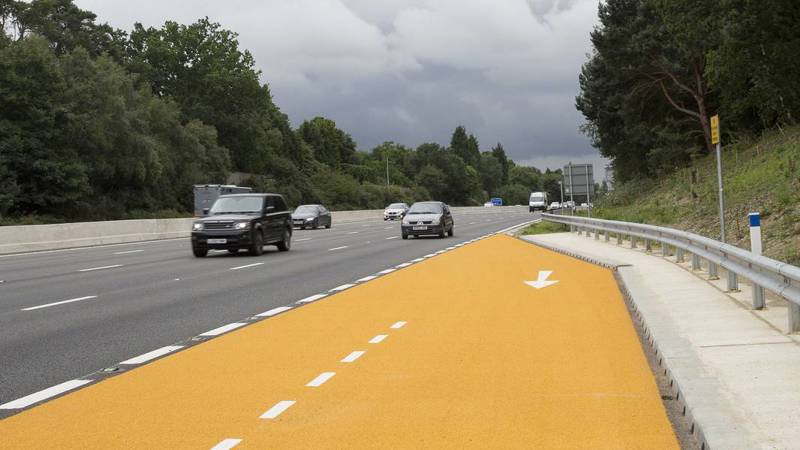National emergency area retrofit
Adding more places to stop in an emergency

What's happening
At National Highways safety is our top priority.
We have listened to drivers' concerns about being able to find a safe place to stop in an emergency on all lane running smart motorways and have delivered a programme to create additional emergency areas on sections of all lane running (ALR) motorway across the country.
In its response to the Transport Select Committee’s report The roll out and safety of smart motorways, the Government committed £390m over the duration of the second Road Investment Strategy to roll out an emergency area retrofit programme. This would see over 150 additional emergency areas being added to ALR motorways in operation and construction.
In April 2023, the government re-affirmed its commitment to ‘continue to invest £900 million in further safety improvements on existing smart motorways.’ This included progressing plans on installing more than 150 extra emergency areas across the network in line with the commitments made in response to the Transport Select Committee. This commitment was met in Spring 2025.
Following completion of the £390m programme there are now around 50% more emergency areas across the ALR network, in comparison to January 2022, giving drivers added reassurance.
The latest safety data continues to show that overall, all three types of smart motorway are safer than conventional motorways in terms of deaths or serious injuries.
This investment in new emergency areas, along with technology like stopped vehicle detection, better and more signs and more information about smart motorways online and in an updated Highway Code, is all designed to help road users feel safe and be even safer on our roads.
About emergency areas
On motorways that don’t have a permanent hard shoulder, there are emergency areas which offer a place to stop in an emergency if you cannot exit the motorway or stop at a motorway service area.
They are marked by blue signs featuring an orange SOS telephone symbol. Each is coloured orange and is around the same length as a football pitch. They are positioned at regular intervals, providing somewhere safe to stop and have phones linked directly to our control rooms.
Find out more about driving on motorways, including what to do in an emergency.
Our programme
We are delivering this programme in phases, with work already underway.
Open
M1 J13-16 (Bedfordshire & Northamptonshire)
M1 J23A-25 (Leicestershire & Nottinghamshire)
M25 J23-27 (Hertfordshire & Essex)
Find out more
You can email the project team directly at EAretrofit@nationalhighways.co.uk
